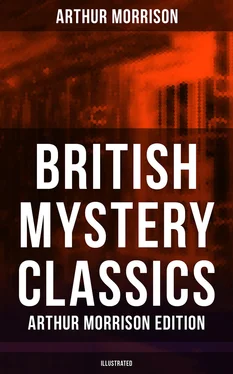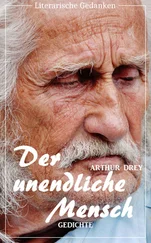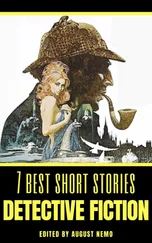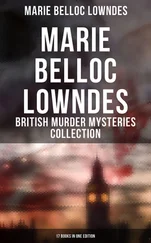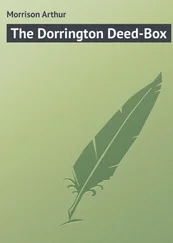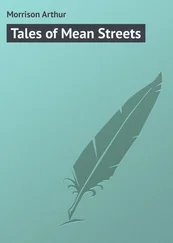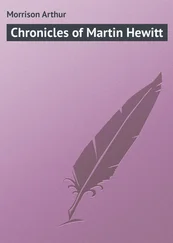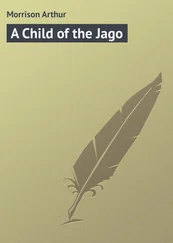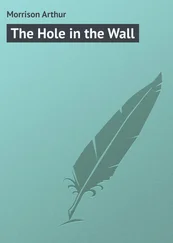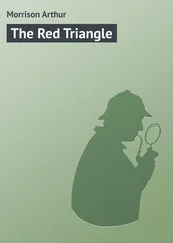“Well — yes,” Hewitt answered, “it is. But all those other pieces are important, too.”
“But why?”
“Because there are no holes in them.” He looked quizzically at my wondering face, and laughed aloud. “Come,” he said, “I won’t puzzle you much longer. Here is the post-office. I’ll send my wire, and then we’ll go and dine at Luzatti’s.”
He sent his telegram, and we cabbed it to Luzatti’s. Among actors, journalists, and others who know town and like a good dinner, Luzatti’s is well known. We went upstairs for the sake of quietness, and took a table standing alone in a recess just inside the door. We ordered our dinner, and then Hewitt began:
“Now tell me what your conclusion is in this matter of the Ivy Cottage murder.”
“Mine? I haven’t one. I’m sorry I’m so very dull, but I really haven’t.”
“Come, I’ll give you a point. Here is the newspaper account (torn sacrilegiously from my scrap-book for your benefit) of the robbery perpetrated on Harvey Challitt a few months before his forgery. Read it.”
“Oh, but I remember the circumstances very well. He was carrying two packets of diamonds belonging to his firm downstairs to the office of another firm of diamond merchants on the ground-floor. It was a quiet time in the day, and halfway down he was seized on a dark landing, made insensible by chloroform, and robbed of the diamonds — five or six thousand pounds’ worth altogether, of stones of various smallish individual values up to thirty pounds or so. He lay unconscious on the landing till one of the partners, noticing that he had been rather long gone, followed and found him. That’s all, I think.”
“Yes, that’s all. Well, what do you make of it?”
“I’m afraid I don’t quite see the connection with this case.”
“Well, then, I’ll give you another point. The telegram I’ve just sent releases information to the police, in consequence of which they will probably apprehend Harvey Challitt and his confederate Henry Gillard, alias Jones, for the murder of Gavin Kingscote. Now, then.”
“Challitt! But he’s in gaol already.”
“Tut, tut, consider. Five years’ penal was his dose, although for the first offence, because the forgery was of an extremely dangerous sort. You left Chelsea over three years ago yourself, and you told me that his difficulty occurred a year before. That makes four years, at least. Good conduct in prison brings a man out of a five year’s sentence in that time or a little less, and, as a matter of fact, Challitt was released rather more than a week ago.”
“Still, I’m afraid I don’t see what you are driving at.”
“Whose story is this about the diamond robbery from Harvey Challitt?”
“His own.”
“Exactly. His own. Does his subsequent record make him look like a person whose stories are to be accepted without doubt or question?”
“Why, no. I think I see — no, I don’t. You mean he stole them himself? I’ve a sort of dim perception of your drift now, but still I can’t fix it. The whole thing’s too complicated.”
“It is a little complicated for a first effort, I admit, so I will tell you. This is the story. Harvey Challitt is an artful young man, and decides on a theft of his firm’s diamonds. He first prepares a hiding-place somewhere near the stairs of his office, and when the opportunity arrives he puts the stones away, spills his chloroform, and makes a smell — possibly sniffs some, and actually goes off on the stairs, and the whole thing’s done. He is carried into the office — the diamonds are gone. He tells of the attack on the stairs, as we have heard, and he is believed. At a suitable opportunity he takes his plunder from the hiding-place, and goes home to his lodgings. What is he to do with those diamonds? He can’t sell them yet, because the robbery is publicly notorious, and all the regular jewel buyers know him.
“Being a criminal novice, he doesn’t know any regular receiver of stolen goods, and if he did would prefer to wait and get full value by an ordinary sale. There will always be a danger of detection so long as the stones are not securely hidden, so he proceeds to hide them. He knows that if any suspicion were aroused his rooms would be searched in every likely place, so he looks for an unlikely place. Of course, he thinks of taking out a panel and hiding them behind that. But the idea is so obvious that it won’t do; the police would certainly take those panels out to look behind them. Therefore he determines to hide them in the panels. See here”— he took the two pieces of wood with the filled hole from his tail pocket and opened his penknife — the putty near the surface is softer than that near the bottom of the hole; two different lots of putty, differently mixed, perhaps, have been used, therefore, presumably, at different times.
“But to return to Challitt. He makes holes with a centre-bit in different places on the panels, and in each hole he places a diamond, embedding it carefully in putty. He smooths the surface carefully flush with the wood, and then very carefully paints the place over, shading off the paint at the edges so as to leave no signs of a patch. He doesn’t do the whole job at once, creating a noise and a smell of paint, but keeps on steadily, a few holes at a time, till in a little while the whole wainscoting is set with hidden diamonds, and every panel is apparently sound and whole.”
“But, then — there was only one such hole in the whole lot.”
Just so, and that very circumstance tells us the whole truth. Let me tell the story first — I’ll explain the clue after. The diamonds lie hidden for a few months — he grows impatient. He wants the money, and he can’t see a way of getting it. At last he determines to make a bolt and go abroad to sell his plunder. He knows he will want money for expenses, and that he may not be able to get rid of his diamonds at once. He also expects that his suddenly going abroad while the robbery is still in people’s minds will bring suspicion on him in any case, so, in for a penny in for a pound, he commits a bold forgery, which, had it been successful, would have put him in funds and enabled him to leave the country with the stones. But the forgery is detected, and he is haled to prison, leaving the diamonds in their wainscot setting.
“Now we come to Gavin Kingscote. He must have been a shrewd fellow — the sort of man that good detectives are made of. Also he must have been pretty unscrupulous. He had his suspicions about the genuineness of the diamond robbery, and kept his eyes open. What indications he had to guide him we don’t know, but living in the same house a sharp fellow on the look — out would probably see enough. At any rate, they led him to the belief that the diamonds were in the thief’s rooms, but not among his movables, or they would have been found after the arrest. Here was his chance. Challitt was out of the way for years, and there was plenty of time to take the house to pieces if it were necessary. So he changed into Challitt’s rooms.
“How long it took him to find the stones we shall never know. He probably tried many other places first, and, I expect, found the diamonds at last by pricking over the panels with a needle. Then came the problem of getting them out without attracting attention. He decided not to trust to the needle, which might possibly leave a stone or two undiscovered, but to split up each panel carefully into splinters so as to leave no part unexamined. Therefore he took measurements, and had a number of panels made by a joiner of the exact size and pattern of those in the room, and announced to his landlady his intention of painting her panels with a pretty design. This to account for the wet paint, and even for the fact of a panel being out of the wall, should she chance to bounce into the room at an awkward moment. All very clever, eh?”
Читать дальше
